Search Result
Results for "
pharmacodynamics
" in MedChemExpress (MCE) Product Catalog:
6
Isotope-Labeled Compounds
| Cat. No. |
Product Name |
Target |
Research Areas |
Chemical Structure |
-
- HY-B0377
-
-
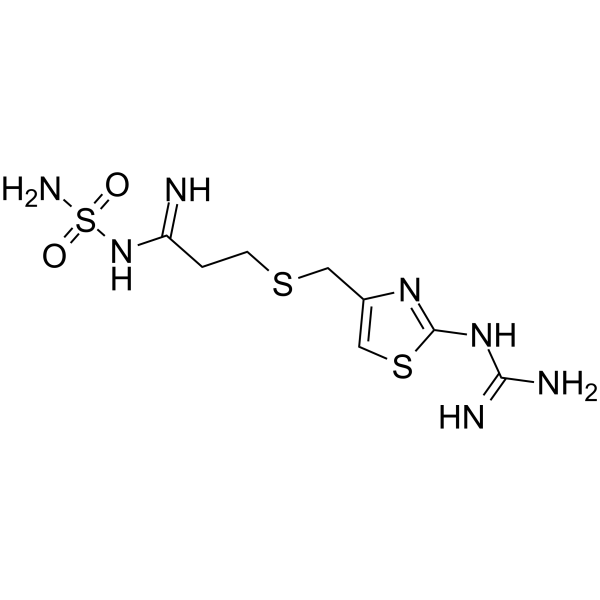
-
- HY-109555
-
|
HMR 1964
|
Insulin Receptor
|
Metabolic Disease
|
|
Insulin glulisine (HMR 1964) is a rapid-acting insulin analogue, it mimics the pharmacokinetic and pharmacodynamic profiles of physiological human insulin. Insulin glulisine can be used for the research of diabetes .
|
-

-
- HY-162255
-
|
|
CDK
|
Cancer
|
|
CDK2-IN-23 (Compound 17) is a kinase selective and highly potent CDK2 inhibitor (IC50 = 0.29 nM). CDK2-IN-23 shows the pharmacodynamic inhibition of CDK2 in CCNE1-amplified mouse models. CDK2-IN-23 can be used for the research of cancer .
|
-
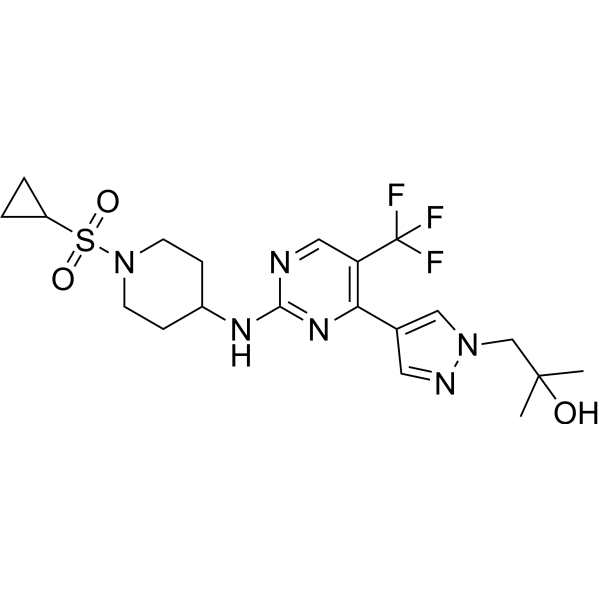
-
- HY-157014
-
|
|
Tryptophan Hydroxylase
|
Cancer
|
|
TPT-004 is a TPH inhibitor. TPT-004 has superior pharmacokinetic and pharmacodynamic properties. TPT-004 also has good efficacy in preclinical models of peripheral serotonin attenuation and colorectal tumor growth .
|
-

-
- HY-143747
-
|
|
Influenza Virus
|
Infection
|
|
Cap-dependent endonuclease-IN-5 is a potent inhibitor of cap-dependent endonuclease (CEN). Cap-dependent endonuclease-IN-5 inhibits influenza virus well, and/or has lower cytotoxicity, better in vivo pharmacokinetic properties and in vivo pharmacodynamic properties (extracted from patent WO2020078401A1, compound 13-1) .
|
-
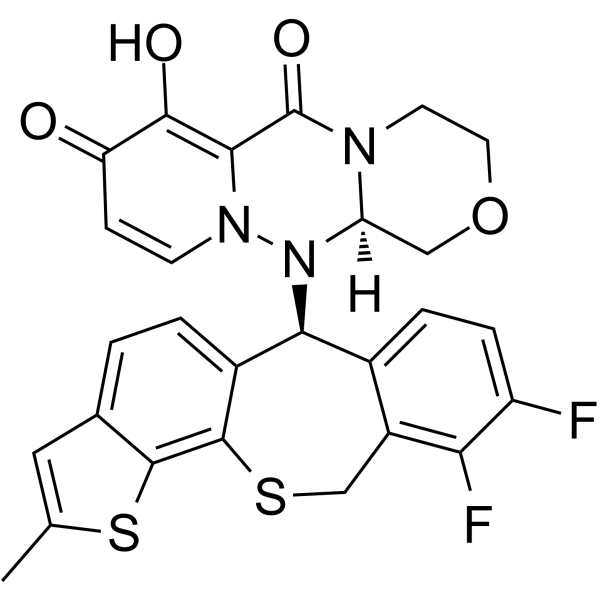
-
- HY-160251
-
|
(3'R,5k'S)-trans-3'-Hydroxycotinine glucuronide
|
Others
|
Others
|
|
3-HC-Gluc ((3’R,5k’s)-trans-3’ -Hydroxycotinine glucuronide) The trans-structure of 3-HC, the main metabolite of nicotine .
|
-
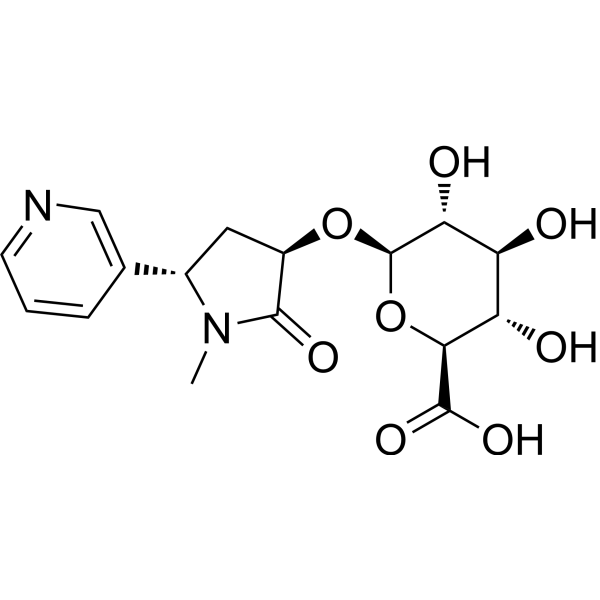
-
- HY-12883A
-
|
|
Sodium Channel
|
Neurological Disease
|
|
PF-05198007 is a potent, orally active and selective arylsulfonamide Nav1.7 inhibitor. PF-05198007 is a compound with a similar pharmacodynamic profile to PF-05089771 .
|
-
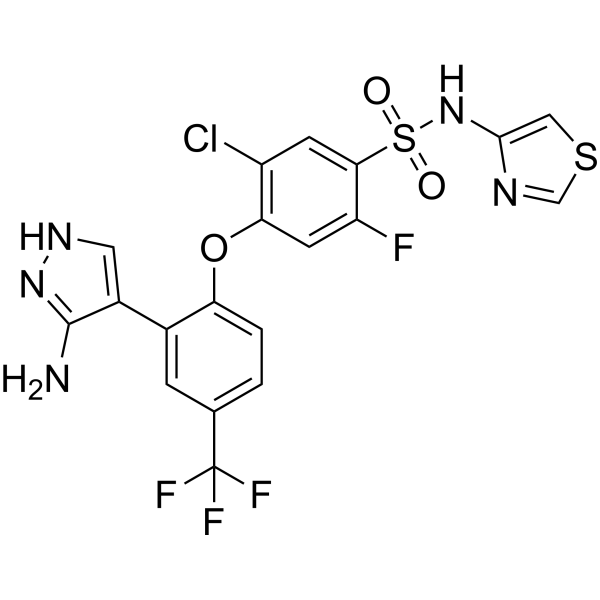
-
- HY-18353
-
|
|
mTOR
|
Cancer
|
|
mTOR inhibitor-3 is a remarkably selective mTOR inhibitor with a Ki of 1.5 nM. mTOR inhibitor-3 suppresses mTORC1 and mTORC2 in cellular and in vivo pharmacokinetic (PK)/pharmacodynamic (PD) experiments.
|
-
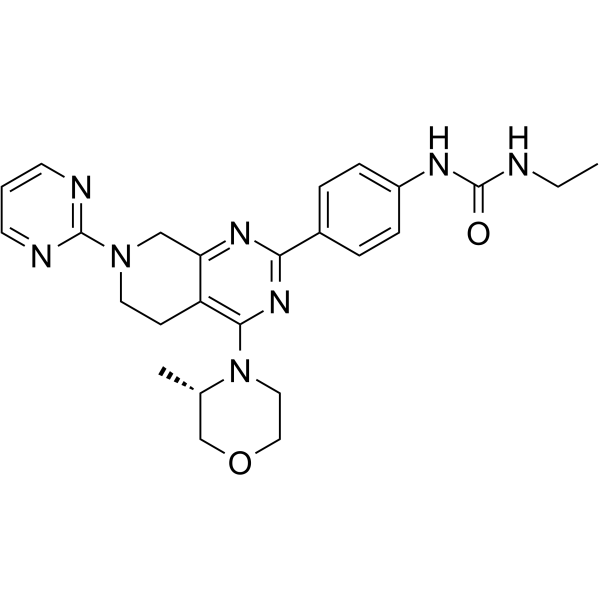
-
- HY-113468A
-
|
3-Methoxy-L-tyrosine; 3-O-Methyl-L-DOPA
|
Dopamine Receptor
Endogenous Metabolite
|
Neurological Disease
|
|
3-O-Methyldopa (3-Methoxy-L-tyrosine) is a metabolite of L-DOPA which is formed by catechol-O-methyltransferase (COMT). 3-O-Methyldopa competitively inhibits the pharmacodynamics of l-DOPA and dopamine .
|
-
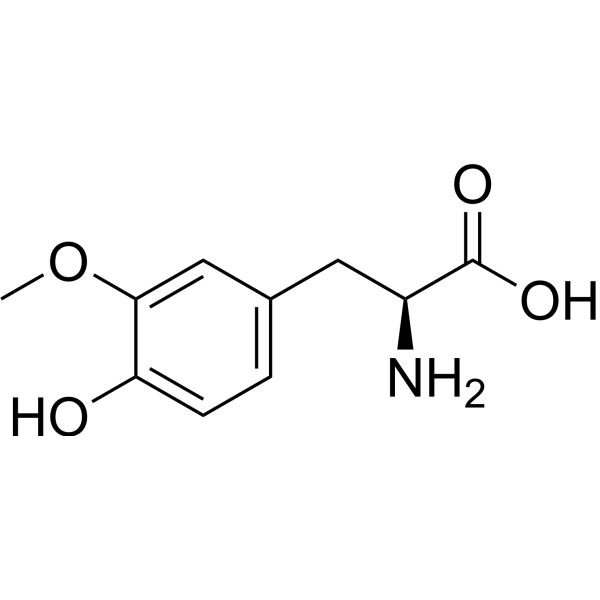
-
- HY-70002A
-
|
N-desmethyl MDV 3100
|
Androgen Receptor
|
Cancer
|
|
N-desmethyl Enzalutamide is the active metabolite of Enzalutamide.N-desmethyl Enzalutamide is the active metabolite of Enzalutamide. N-desmethyl Enzalutamide demonstrates primary and secondary pharmacodynamics of similar potency to Enzalutamide and circulates at approximately the same plasma concentrations as enzalutamide .
|
-
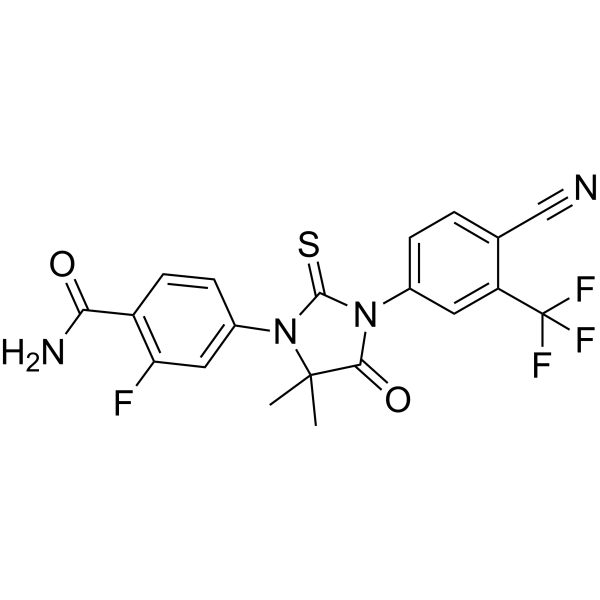
-
- HY-A0147
-
|
OPC-17116; dl-Grepafloxacin
|
|
|
|
Grepafloxacin (OPC-17116) is an oral actively fluoroquinolone antibiotic with potent activity against community-acquired respiratory pathogens including Streptococcus pneumonia. Grepafloxacin has high tissue penetration and a promising pharmacodynamic profile .
|
-
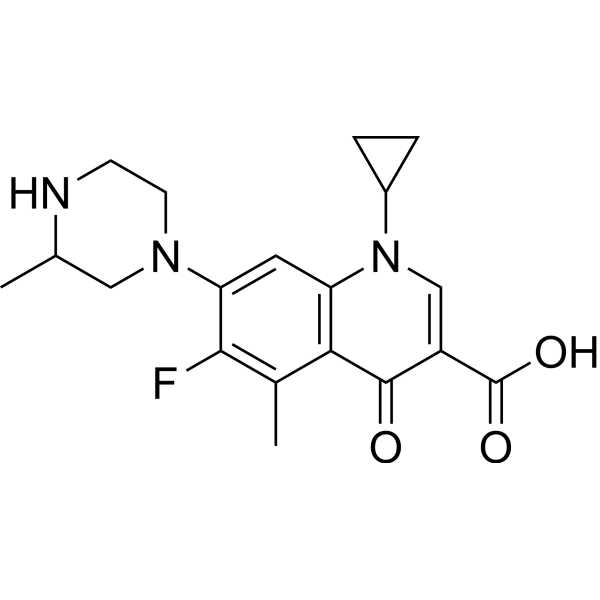
-
- HY-136933
-
|
|
Na+/K+ ATPase
|
Cardiovascular Disease
|
|
Gitoxin, a Na +/K +-ATPase inhibitor, usually appears as a result of metabolic degradation of Digitoxin, is just the hydroxyl (ZOH) group close to the C-17β position, which changes the pharmacokinetics and pharmacodynamics of these substances considerably .
|
-
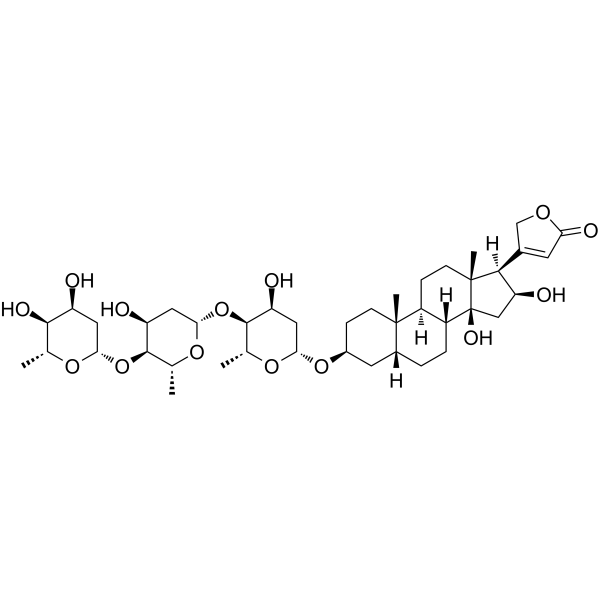
-
- HY-10787
-
|
H 376/95
|
Thrombin
|
Cardiovascular Disease
|
|
Ximelagatran (H 376/95) is an orally active thrombin inhibitor that selectively and competitively inhibits both free and clot-bound thrombin. Ximelagatran is an anticoagulant agent with a rapid onset of anticoagulant effect, predictable, dose-dependent pharmcokinetics and pharmacodynamics .
|
-
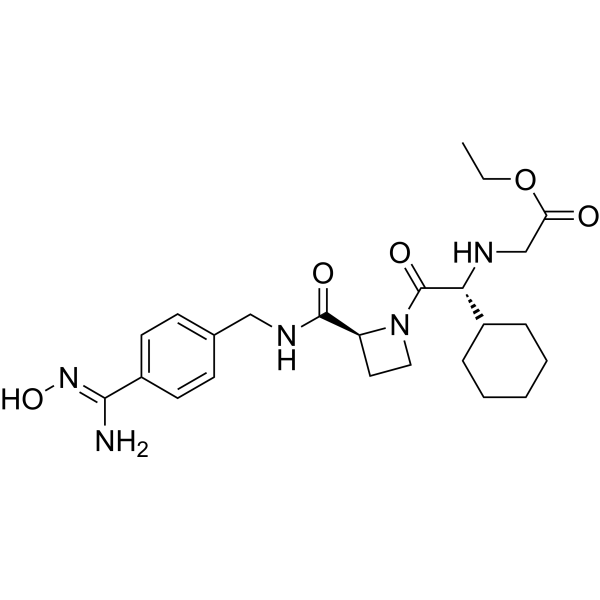
-
- HY-A0147A
-
|
OPC-17116 hydrochloride; dl-Grepafloxacin hydrochloride
|
Antibiotic
Bacterial
|
Infection
|
|
Grepafloxacin (OPC-17116) hydrochloride is an oral actively fluoroquinolone antibiotic with potent activity against community-acquired respiratory pathogens including Streptococcus pneumonia. Grepafloxacin hydrochloride has high tissue penetration and a promising pharmacodynamic profile .
|
-
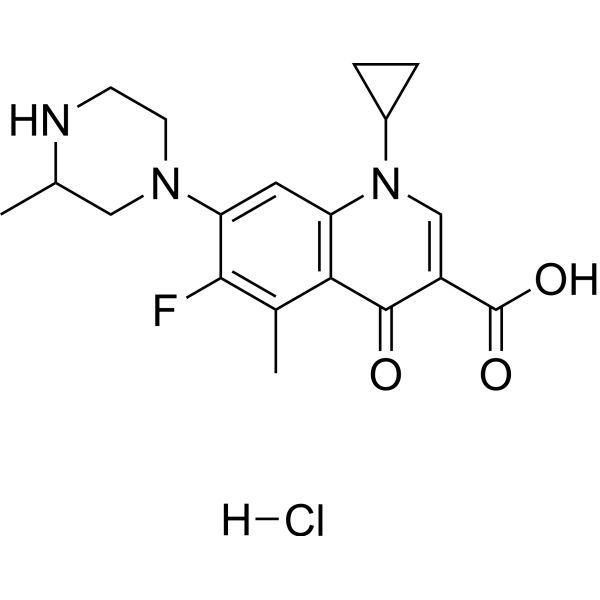
-
- HY-B0377S
-
-
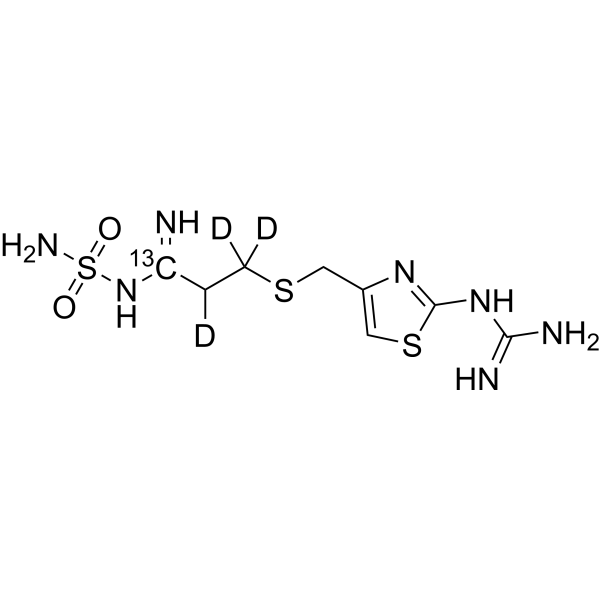
-
- HY-101560
-
|
BMS-986205; ONO-7701
|
Indoleamine 2,3-Dioxygenase (IDO)
|
Cancer
|
|
Linrodostat (BMS-986205) is a selective and irreversible indoleamine 2,3-dioxygenase 1 (IDO1) inhibitor with an IC50 value of 1.1 nM in IDO1-HEK293 cells. Linrodostat is well tolerated with potent pharmacodynamic activity in advanced cancers .
|
-
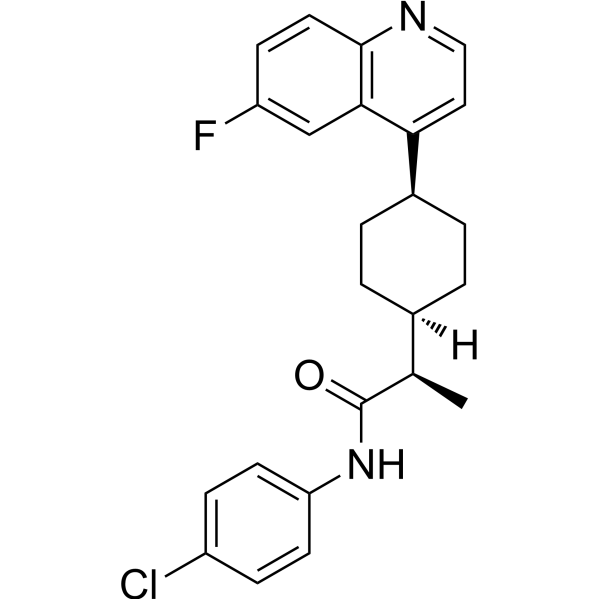
-
- HY-143889
-
|
|
CDK
|
Cancer
|
|
Senexin C is a selective and orally active CDK8/19 inhibitor. Senexin C shows a strong tumor-enrichment pharmacokinetic (PK) profile and tumor-pharmacodynamic (PD) marker responses. Senexin C inhibits the growth of MV4-11 leukemia cells with good tolerability .
|
-
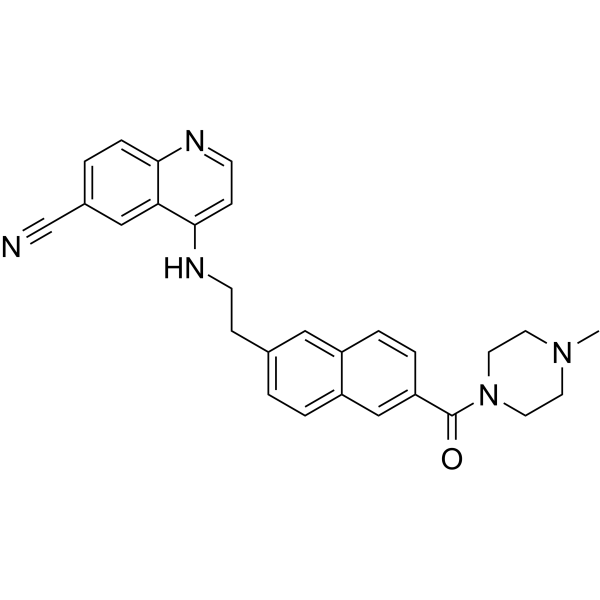
-
- HY-113468AS
-
|
3-Methoxy-L-tyrosine-d3; 3-O-Methyl-L-DOPA-d3
|
Dopamine Receptor
Endogenous Metabolite
|
Neurological Disease
|
|
3-O-Methyldopa-d3 is deuterium labeled 3-O-Methyldopa. 3-O-Methyldopa is a metabolite of L-DOPA which is formed by catechol-O-methyltransferase (COMT). 3-O-Methyldopa competitively inhibits the pharmacodynamics of l-DOPA and dopamine[1].
|
-
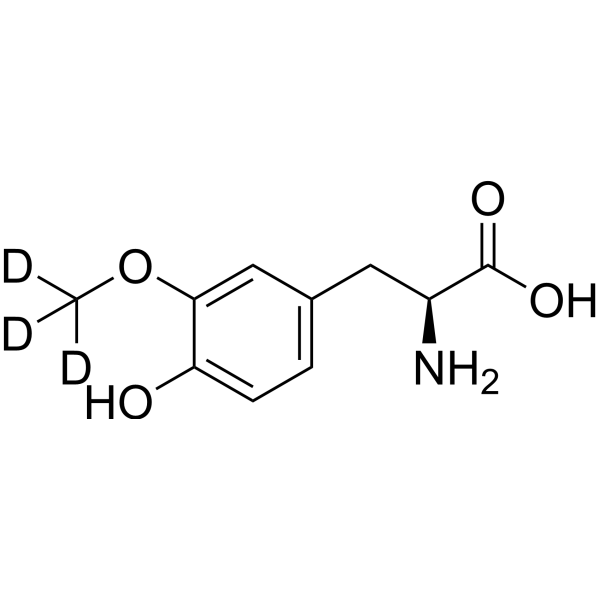
-
- HY-117290
-
|
|
Factor Xa
|
Cardiovascular Disease
|
|
BMS-962212 is a direct, reversible, selective factor XIa (FXIa) inhibitor . BMS-962212 is well tolerated, with fast onset of pharmacodynamic (PD) responses and rapid elimination. BMS-962212 increases exposure dependently in activated partial thromboplastin time, and decreases exposure dependently in FXI clotting activity .
|
-

-
- HY-18030A
-
|
|
Anaplastic lymphoma kinase (ALK)
|
Cancer
|
|
CEP-28122 mesylate salt, a diaminopyrimidine derivative, is a potent, selective, and orally bioavailable ALK inhibitor, with an IC50 value of 1.9 nM for recombinant ALK kinase activity. CEP-28122 has antitumor activity in experimental models of ALK-positive human cancers. CEP-28122 mesylate salt has good pharmacodynamic and pharmacokinetic activity .
|
-

-
- HY-70002AS
-
|
N-desmethyl MDV 3100-d6
|
|
|
|
N-desmethyl Enzalutamide-d6 is a deuterium labeled N-desmethyl Enzalutamide. N-desmethyl Enzalutamide is an active metabolite of Enzalutamide. N-desmethyl Enzalutamide is the active metabolite of Enzalutamide. N-desmethyl Enzalutamide demonstrates primary and secondary pharmacodynamics of similar potency to Enzalutamide and circulates at approximately the same plasma concentrations as enzalutamide[1].
|
-
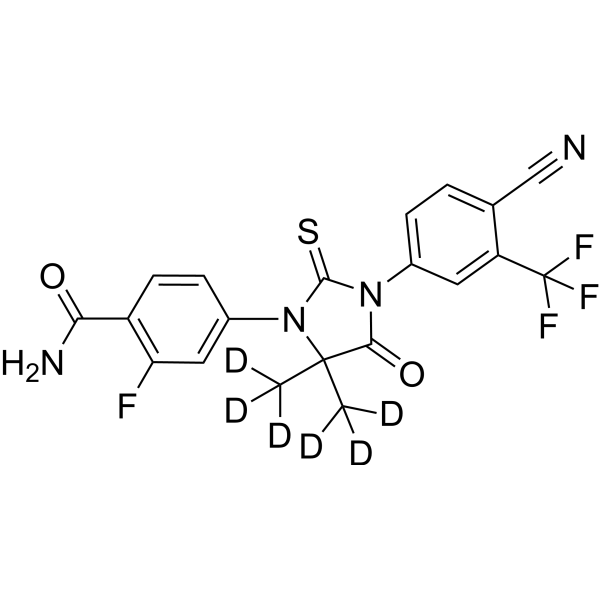
-
- HY-N8265
-
|
|
HSV
DNA/RNA Synthesis
ATP Synthase
|
Infection
|
|
Abyssinone V is a prenylated flavonoid with predicted anti-viral activity. Abyssinone V can be isolated from the stem bark of Erythrina melanacantha. Abyssinone V possesses good pharmacodynamics properties. Abyssinone V is predicted to be antivirals including anti-herpes (HSV) agent, with mechanisms comprising inhibition of polymerase, ATPase and membrane integrity .
|
-
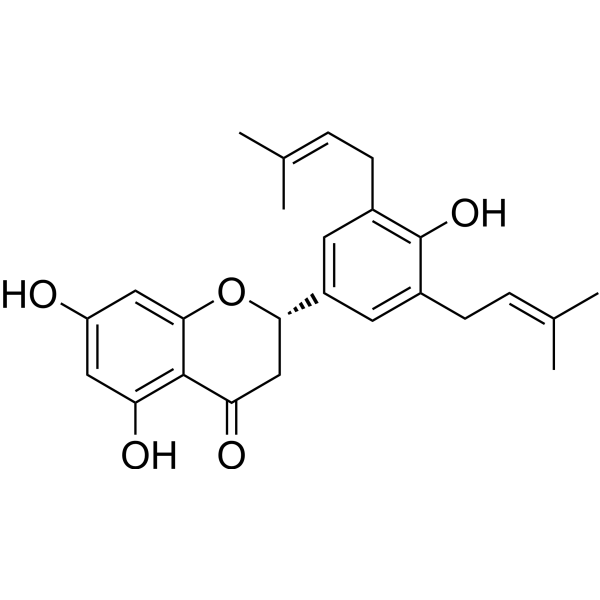
-
- HY-113468AS1
-
|
3-Methoxy-L-tyrosine-d3 hydrate; 3-O-Methyl-L-DOPA-d3 hydrate
|
Isotope-Labeled Compounds
Dopamine Receptor
Endogenous Metabolite
|
Neurological Disease
|
|
3-O-Methyldopa-d3 (hydrate) is the deuterium labeled 3-O-Methyldopa. 3-O-Methyldopa (3-Methoxy-L-tyrosine) is a metabolite of L-DOPA which is formed by catechol-O-methyltransferase (COMT). 3-O-Methyldopa competitively inhibits the pharmacodynamics of l-DOPA and dopamine[1].
|
-
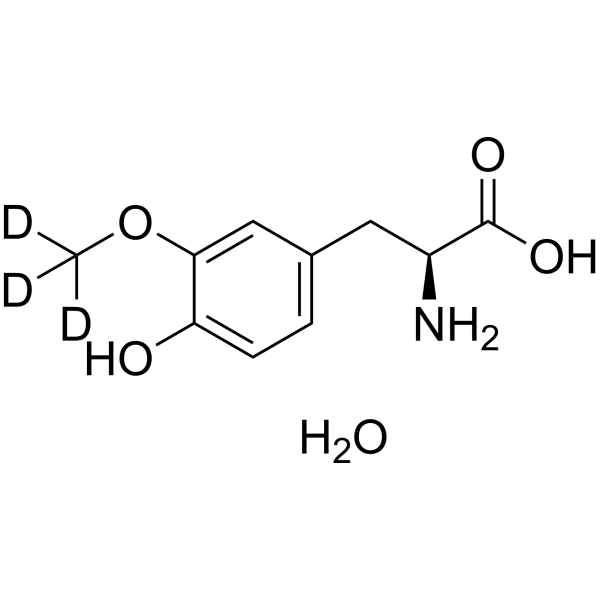
-
- HY-109052
-
|
JNJ-54861911
|
Beta-secretase
|
Neurological Disease
|
|
Atabecestat (JNJ-54861911) is a potent brain-penetrant and orally active β-site amyloid precursor protein cleaving enzyme 1 (BACE1) inhibitor, achieves robust and high CSF Aβ reduction. Atabecestat s tolerated and displays a sustained pharmacokinetic (PK) and pharmacodynamic (PD) characteristics. Atabecestat has the potential for Alzheimer's Disease treatment .
|
-
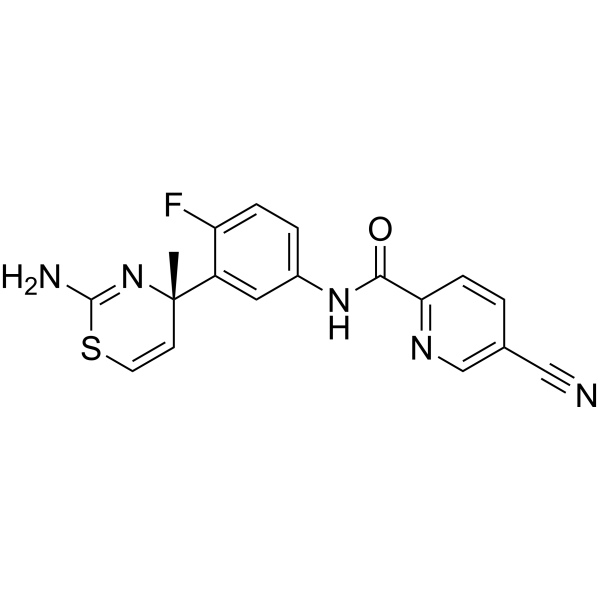
-
- HY-132296
-
|
|
FAK
PROTACs
|
Cancer
|
|
GSK215 is a potent and selective PROTAC focal adhesion kinase (FAK) degrader with a pDC50 of 8.4. GSK215 is designed by a binder for the VHL E3 ligase and the FAK inhibitor VS-4718. GSK215 induces rapid and prolonged FAK degradation, giving a long-lasting effect on FAK levels and a marked pharmacokinetic/pharmacodynamics (PK/PD) disconnect .
|
-

-
- HY-D1460
-
|
|
Bacterial
|
Infection
|
|
Fluorescein Di-β-D-Glucuronide, a fluorescent probe, can be utilized to non-invasively image the intestinal bacterial β-glucuronidase activity in nude mice. Fluorescein Di-β-D-Glucuronide-based imaging reveals the in vitro and in vivo activity of intestinal bacterial β-glucuronidase, which would facilitate pharmacodynamic studies of specific bacterial β-glucuronidase inhibitors in animal studies .
|
-

-
- HY-W401531S
-
|
|
Dopamine Receptor
Endogenous Metabolite
|
Neurological Disease
|
|
(R)-3-O-Methyldopa-d3 is a deuterium labeled (R)-3-O-Methyldopa, and (R)-3-O-Methyldopa is an R-enantiomer of 3-O-Methyldopa. 3-O-Methyldopa is a metabolite of L-DOPA which is formed by catechol-O-methyltransferase (COMT). 3-O-Methyldopa competitively inhibits the pharmacodynamics of L-DOPA and dopamine[1][2].
|
-
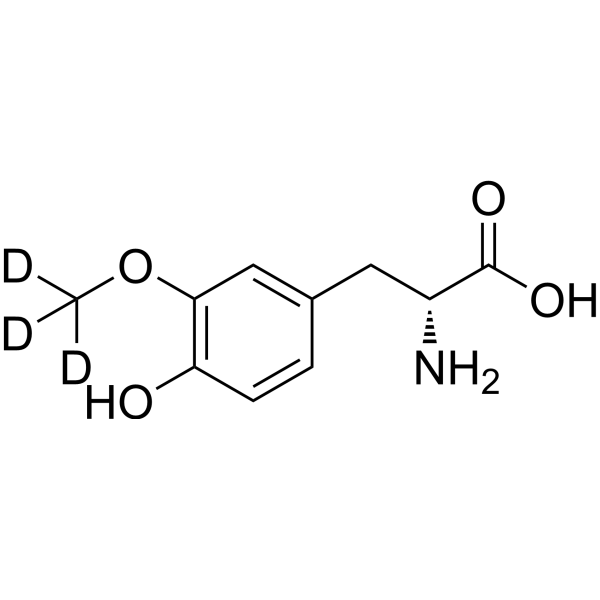
-
- HY-W401531S1
-
|
|
Dopamine Receptor
Endogenous Metabolite
|
Neurological Disease
|
|
(R)-3-O-Methyldopa-d3 (hydrochloride) is a deuterium labeled (R)-3-O-Methyldopa, and (R)-3-O-Methyldopa is an R-enantiomer of 3-O-Methyldopa. 3-O-Methyldopa is a metabolite of L-DOPA which is formed by catechol-O-methyltransferase (COMT). 3-O-Methyldopa competitively inhibits the pharmacodynamics of L-DOPA and dopamine[1][2].
|
-
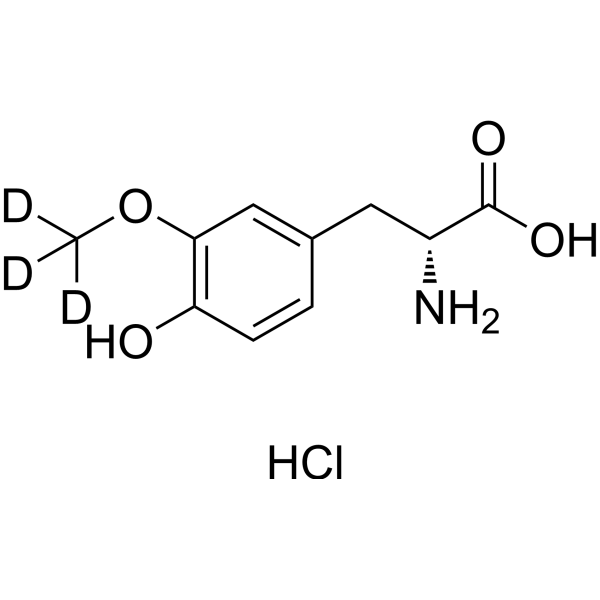
-
- HY-161349
-
|
|
Aminopeptidase
|
Inflammation/Immunology
|
|
LTA4H-IN-4 (compound 3) is an orally active LTA4H inhibitor. The IC50 value of LTA4H-IN-4 for hERG is 156 μM. LTA4H-IN-4 can be used in inflammation related studies .
|
-
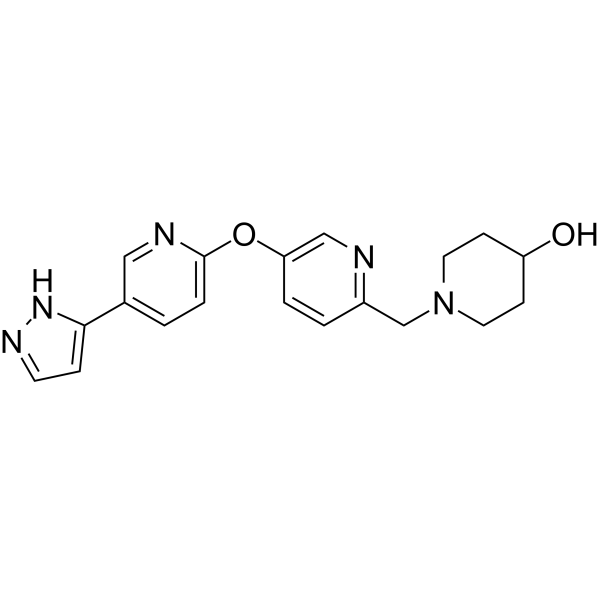
-
- HY-111745
-
|
|
JAK
|
Inflammation/Immunology
|
|
Tyk2-IN-5 (compound 6) is a potent, selective and orally active tyrosine kinase 2 (Tyk2) inhibitor that acts on the JH2 structural domain. Tyk2-IN-5 shows a Ki value of 0.086 nM for Tyk2 JH2 and an IC50 value of 25 nM for IFNα. Tyk2-IN-5 efficiently inhibits the production of IFNγ in a pharmacodynamic rat model and is fully efficacious in a rat model of arthritis .
|
-
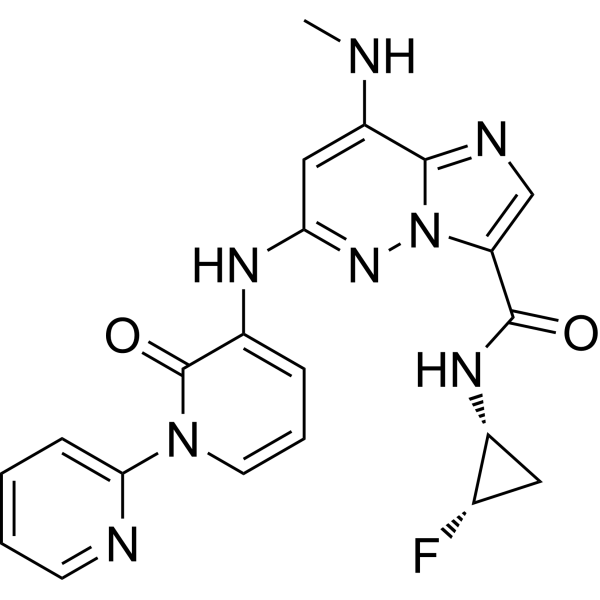
-
- HY-143744
-
|
|
Influenza Virus
|
Infection
|
|
Cap-dependent endonuclease-IN-3 is a potent inhibitor of cap-dependent endonuclease (CEN). Not only can Cap-dependent endonuclease-IN-3 inhibit influenza virus well, but also has lower cytotoxicity, better in vivo agent kinetic properties and in vivo pharmacodynamic properties. Cap-dependent endonuclease-IN-3 has the potential for the research of influenza A and influenza B infection (extracted from patent WO2019141179A1, compound VI-1) .
|
-
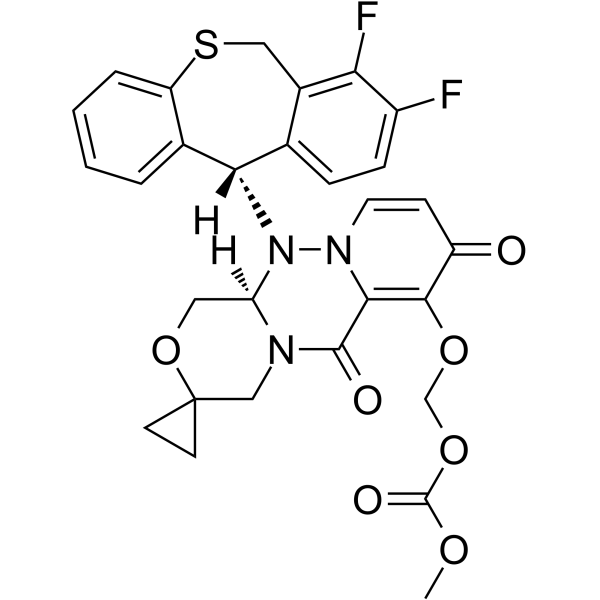
-
- HY-143743
-
|
|
Influenza Virus
|
Infection
|
|
Cap-dependent endonuclease-IN-2 is a potent inhibitor of cap-dependent endonuclease (CEN). Not only can Cap-dependent endonuclease-IN-2 inhibit influenza virus well, but also has lower cytotoxicity, better in vivo agent kinetic properties and in vivo pharmacodynamic properties. Cap-dependent endonuclease-IN-2 has strong inhibitory effect on RNA polymerase activity of A virus (extracted from patent WO2019052565A1, compound 28) .
|
-
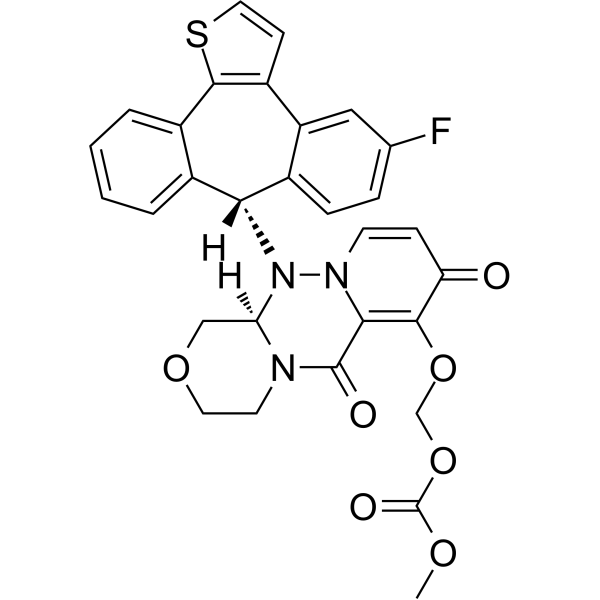
-
- HY-143755
-
|
|
Influenza Virus
|
Infection
|
|
Cap-dependent endonuclease-IN-9 is a potent inhibitor of cap-dependent endonuclease (CEN). Not only can Cap-dependent endonuclease-IN-9 inhibit influenza virus well, but also has lower cytotoxicity, better in vivo agent kinetic properties and in vivo pharmacodynamic properties. Cap-dependent endonuclease-IN-9 has strong inhibitory effect on RNA polymerase activity of A virus (extracted from patent CN112521386A, compound VI-1) .
|
-
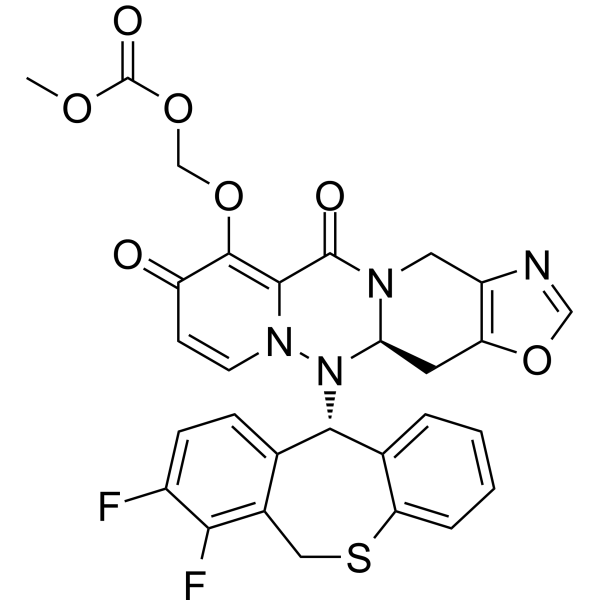
-
- HY-143757
-
|
|
Influenza Virus
|
Infection
|
|
Cap-dependent endonuclease-IN-10 is a potent inhibitor of cap-dependent endonuclease (CEN). Not only can Cap-dependent endonuclease-IN-10 inhibit influenza virus well, but also has lower cytotoxicity, better in vivo pharmacokinetic and in vivo pharmacodynamic properties, and better hepatic microsomal stability. Cap-dependent endonuclease-IN-10 has the potential for the research of viral infections (including influenza A, influenza B and influenza C) (extracted from patent WO2021129799A1, compound 1-1) .
|
-

-
- HY-139920
-
|
SH-1028
|
EGFR
|
Cancer
|
|
Oritinib (SH-1028), an irreversible third-generation EGFR TKI, overcomes T790M-mediated resistance in non-small cell lung cancer. Oritinib (SH-1028), a mutant-selective inhibitor of EGFR kinase activity, inhibits EGFR WT, EGFR L858R, EGFR L861Q, EGFR L858R/T790M, EGFR d746-750 and EGFR d746-750/T790M kinases, with IC50s of 18, 0.7, 4, 0.1, 1.4 and 0.89 nM, respectively .
|
-

-
- HY-10900
-
-
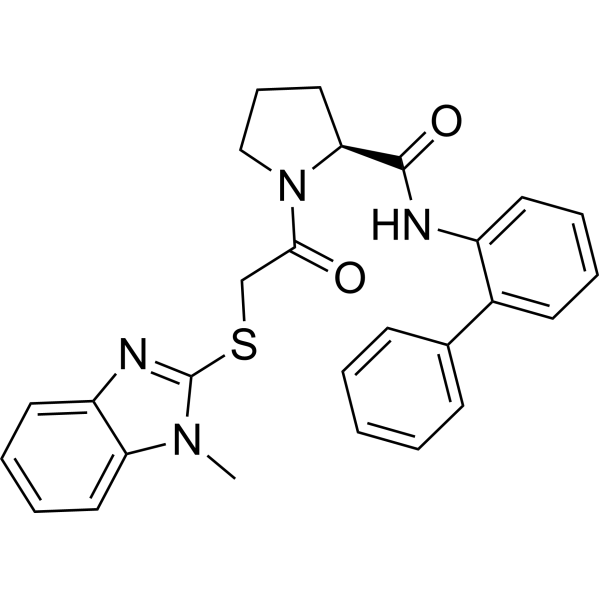
-
- HY-155406
-
|
|
Estrogen Receptor/ERR
Caspase
Bcl-2 Family
|
Cancer
|
|
Estrogen receptor modulator 10 (compound G-5b) is an Estrogen receptor (ER) antagonist (IC50=6.7 nM) and degrader (DC50=0.4 nM). Estrogen receptor modulator 10 can induce apoptosis. Estrogen receptor modulator 10 can block cells at the G1/G0 phase. Estrogen receptor modulator 10 can be used in cancer studies .
|
-
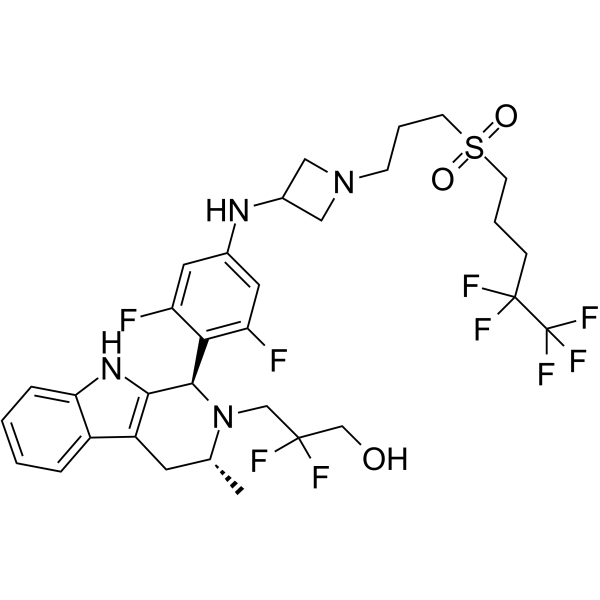
-
- HY-126242S
-
|
|
JAK
|
Inflammation/Immunology
|
|
Tyk2-IN-7 is a TYK2 JH2 inhibitor, binds to TYK2 JH2 domain with IC50 and Ki.app of 0.00053 μM and 0.00007 μM, respectively. Tyk2-IN-7 provides a highly selective alternative to conventional TYK2 orthosteric inhibitors, inhibits TYK2/JAK1/JAK2 kinase domain. Tyk2-IN-7 provides robust inhibition in a mouse IL-12-induced IFNγ pharmacodynamic model as well as efficacy in an IL-23 and IL-12-dependent mouse colitis model[1].
|
-
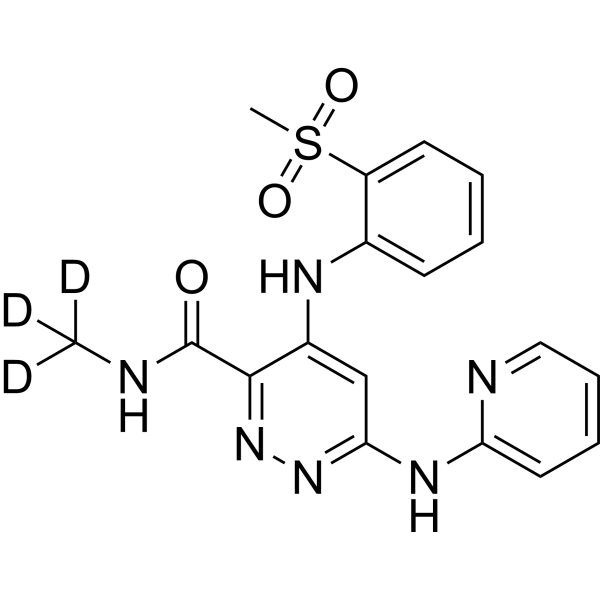
-
- HY-15790
-
-
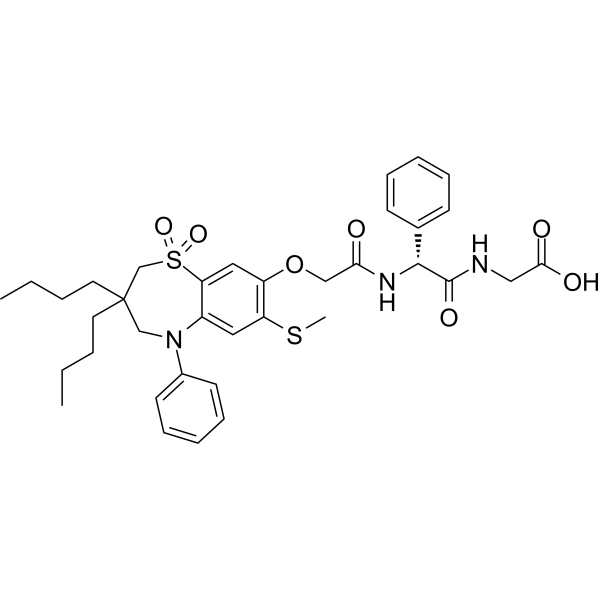
| Cat. No. |
Product Name |
Type |
-
- HY-D1460
-
|
|
Fluorescent Dyes/Probes
|
|
Fluorescein Di-β-D-Glucuronide, a fluorescent probe, can be utilized to non-invasively image the intestinal bacterial β-glucuronidase activity in nude mice. Fluorescein Di-β-D-Glucuronide-based imaging reveals the in vitro and in vivo activity of intestinal bacterial β-glucuronidase, which would facilitate pharmacodynamic studies of specific bacterial β-glucuronidase inhibitors in animal studies .
|
| Cat. No. |
Product Name |
Target |
Research Area |
-
- HY-109555
-
|
HMR 1964
|
Insulin Receptor
|
Metabolic Disease
|
|
Insulin glulisine (HMR 1964) is a rapid-acting insulin analogue, it mimics the pharmacokinetic and pharmacodynamic profiles of physiological human insulin. Insulin glulisine can be used for the research of diabetes .
|
| Cat. No. |
Product Name |
Category |
Target |
Chemical Structure |
| Cat. No. |
Product Name |
Chemical Structure |
-
- HY-113468AS
-
|
|
|
3-O-Methyldopa-d3 is deuterium labeled 3-O-Methyldopa. 3-O-Methyldopa is a metabolite of L-DOPA which is formed by catechol-O-methyltransferase (COMT). 3-O-Methyldopa competitively inhibits the pharmacodynamics of l-DOPA and dopamine[1].
|
-

-
- HY-B0377S
-
|
|
|
Famotidine- 13C,d3 is the 13C- and deuterium labeled Famotidine. Famotidine (MK-208) is a competitive histamine H2-receptor antagonist. Its main pharmacodynamic effect is the inhibition of gastric secretion.
|
-

-
- HY-113468AS1
-
|
|
|
3-O-Methyldopa-d3 (hydrate) is the deuterium labeled 3-O-Methyldopa. 3-O-Methyldopa (3-Methoxy-L-tyrosine) is a metabolite of L-DOPA which is formed by catechol-O-methyltransferase (COMT). 3-O-Methyldopa competitively inhibits the pharmacodynamics of l-DOPA and dopamine[1].
|
-

-
- HY-W401531S
-
|
|
|
(R)-3-O-Methyldopa-d3 is a deuterium labeled (R)-3-O-Methyldopa, and (R)-3-O-Methyldopa is an R-enantiomer of 3-O-Methyldopa. 3-O-Methyldopa is a metabolite of L-DOPA which is formed by catechol-O-methyltransferase (COMT). 3-O-Methyldopa competitively inhibits the pharmacodynamics of L-DOPA and dopamine[1][2].
|
-

-
- HY-W401531S1
-
|
|
|
(R)-3-O-Methyldopa-d3 (hydrochloride) is a deuterium labeled (R)-3-O-Methyldopa, and (R)-3-O-Methyldopa is an R-enantiomer of 3-O-Methyldopa. 3-O-Methyldopa is a metabolite of L-DOPA which is formed by catechol-O-methyltransferase (COMT). 3-O-Methyldopa competitively inhibits the pharmacodynamics of L-DOPA and dopamine[1][2].
|
-

-
- HY-126242S
-
|
|
|
Tyk2-IN-7 is a TYK2 JH2 inhibitor, binds to TYK2 JH2 domain with IC50 and Ki.app of 0.00053 μM and 0.00007 μM, respectively. Tyk2-IN-7 provides a highly selective alternative to conventional TYK2 orthosteric inhibitors, inhibits TYK2/JAK1/JAK2 kinase domain. Tyk2-IN-7 provides robust inhibition in a mouse IL-12-induced IFNγ pharmacodynamic model as well as efficacy in an IL-23 and IL-12-dependent mouse colitis model[1].
|
-

Your information is safe with us. * Required Fields.
Inquiry Information
- Product Name:
- Cat. No.:
- Quantity:
- MCE Japan Authorized Agent:















































